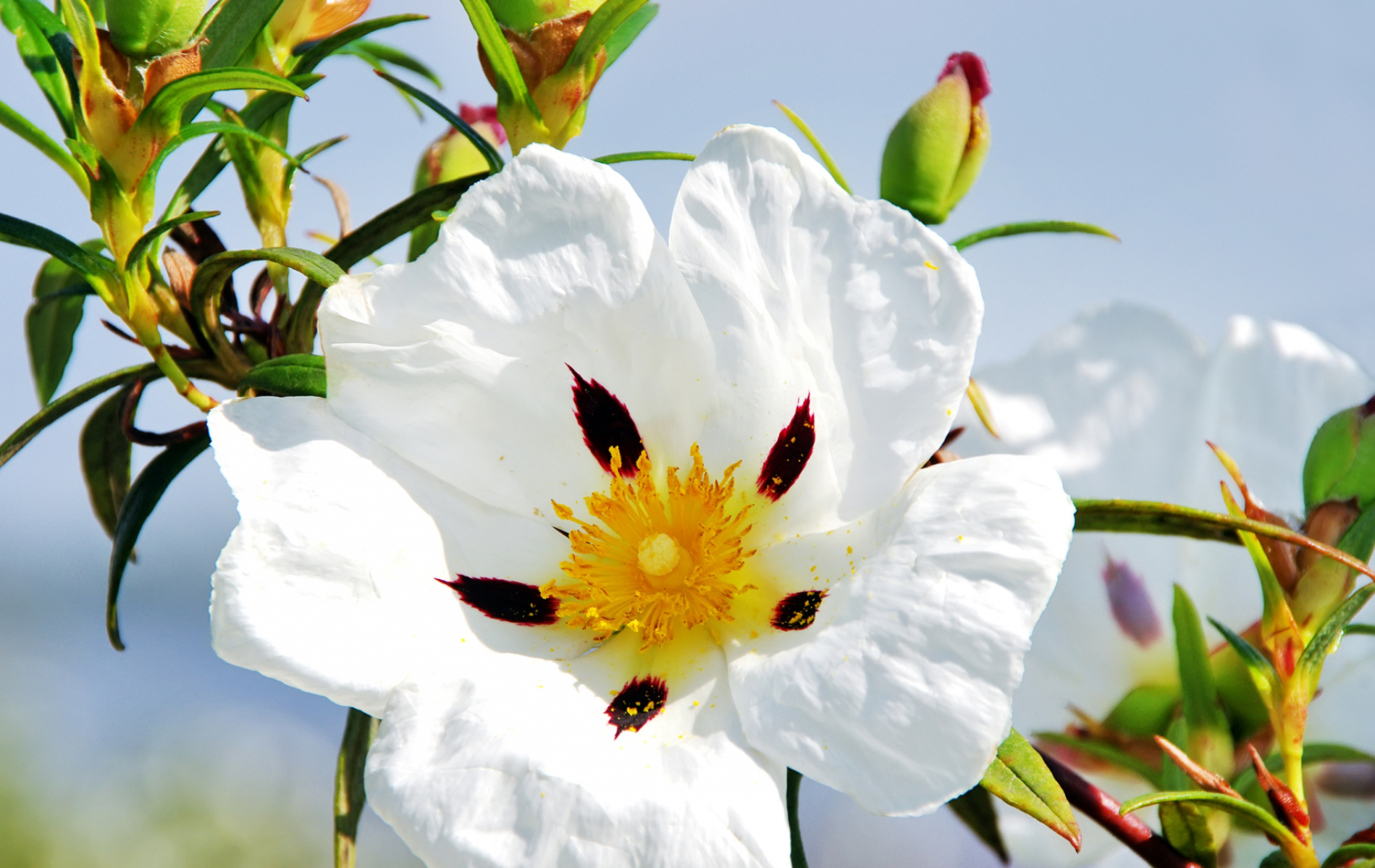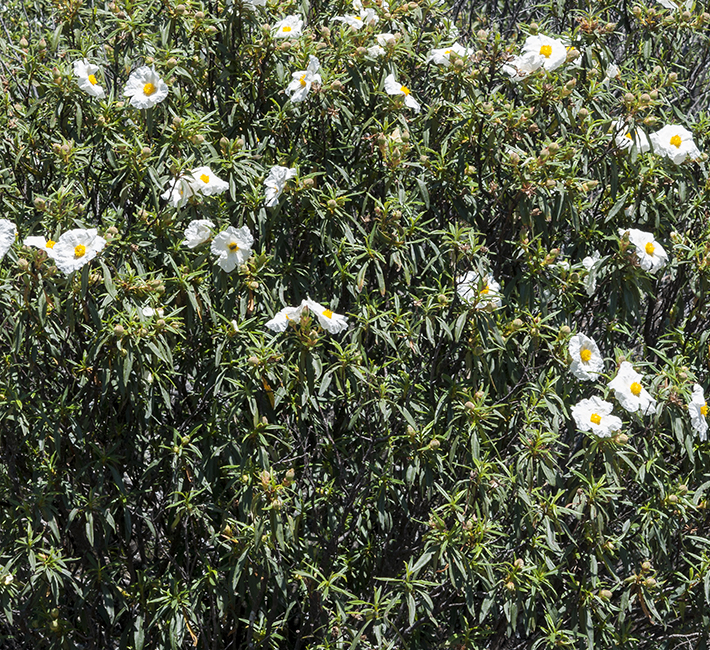Featured | 04 May 2021
Perfumer's treasure chest: Labdanum & Cistus
The brown-eyed rockrose, Cistus ladanifer, is a species of flowering shrub growing up to eight feet tall and originating from the Mediterranean region. It is now found growing wild across much of Spain, Southern Portugal, North Africa, Southern France and Cyprus.

The broad evergreen leaves are covered by glandular hairs that exude the odoriferous oleo-resin we call labdanum. Its sweet-resinous, woody-amber odour has been used for perfumery purposes for many centuries.
In Cyprus, for example, shepherds would collect the material by combing the fur of the goats and sheep that been grazing on the shrubs. Sold to buyers in the sea ports, this labdanum would then be used for incense and by medics to treat colds, coughs, rheumatism and menstrual problems. In ancient Egypt, pharaohs used false beards made from goat hair impregnated with labdanum to create an impressive aura of distinction. The book of Genesis includes two references to labdanum, and it has even been suggested that the sceptre of Osiris, the Egyptian god of the afterlife, is an instrument for collecting the raw gum. Some scholars propose that ‘onycha’, a mysterious ingredient in the holy incense (ketoret), mentioned in the Old Testament, was in fact labdanum.
The Cypriotes mixed labdanum with calamus and styrax extracts to create an early version of a classic perfumery accord. When the crusaders conquered the island in the late twelfth century they brought the recipe back to the rest of Europe, naming it ‘Chypre’, a term we still use today.
IT HAS A FINE, POWERFUL, DIFFUSIVE AND VERY SUBSTANTIVE ODOUR REMINISCENT OF INCENSE OF AMBERGRIS
Modern production, mainly in France and Spain, relies on treating the plants with hot, alkaline water to capture the waxes, resinous material and oils from the stems and leaves. Steam distillation of the crude gum – a dark-brown to black plastic mass containing about 20% water – gives a yield of around 2% of labdanum essential oil. It has a fine, powerful, diffusive and very substantive odour reminiscent of incense and ambergris. Resinoids and concretes can be obtained by hydrocarbon solvent extraction of the raw gum, whilst absolutes can be produced by alcoholic extraction of these, or directly from the gum. Any of these are more refined than the raw material from the plant. The term ‘labdanum resin’ can refer to many things, most commonly an alcohol insoluble portion of the resinoid, but sometimes a selective solvent extract of crude labdanum.
‘Cistus’ can be a confusing description as it’s used to designate either a better quality labdanum, or the material derived directly from the parts of the plant above ground: the leaves, stems and flowering tops of the plant, especially those from the South of France. It is not the labdanum oleo-resin described above.
 Variations on the exact processes used, blending of the different extracts, mentioned above, and, sometimes, the addition of other materials give us several speciality materials unique to various suppliers. These variations also find use in many fragrance types such as chypres, lavender colognes, fougères, pines and ambre, tabac or aldehydic bases, and also in a wide range of products form fine fragrances and cosmetics to household applications, particularly when a fixative effect is required
Variations on the exact processes used, blending of the different extracts, mentioned above, and, sometimes, the addition of other materials give us several speciality materials unique to various suppliers. These variations also find use in many fragrance types such as chypres, lavender colognes, fougères, pines and ambre, tabac or aldehydic bases, and also in a wide range of products form fine fragrances and cosmetics to household applications, particularly when a fixative effect is required


